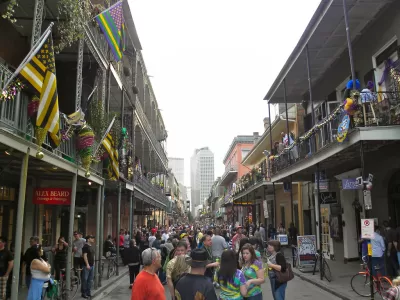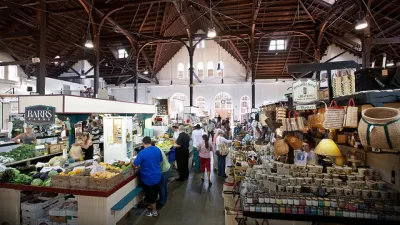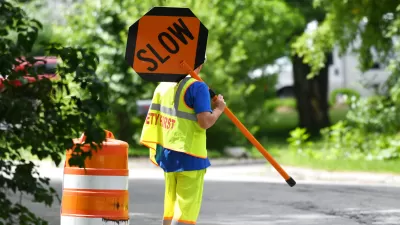Plagued by supermarket chains and natural disasters, the public markets of New Orleans could help revive community identity. Here are some of the ways they're getting back in business.

Neither supermarkets nor farmers' markets, New Orleans public markets once bound the city together. Nina Feldman writes, "[t]he markets were iconic buildings, usually positioned in the center of the neighborhood. They sold produce, meat and dairy in the morning. As the day wore on, the ice melted and food couldn't be kept cold any longer. So in the afternoons and evenings, the markets stopped functioning as markets, but still served as gathering spaces. They were the hubs of their community, hosting events like political rallies and concerts."
The rise of supermarket-based food economics threatened the markets' viability. And their New Orleans location gave rise to additional challenges: "When Hurricane Katrina hit 10 years ago, it proved to be a deadly blow for many of these already fragile structures. The era of demolition by neglect was over; hurricane winds and floodwaters left buildings like the old St. Roch Market destroyed."
Feldman describes post-Katrina efforts to revive and rebrand the iconic structures, reviving some of their old functions in the process. Markets under redevelopment include St. Roch Market, Dryades Market, and Circle Food Store. From the article: "The public market network in New Orleans will never resemble its previous system; the markets' primary function is not as essential to every day life. But they can still offer New Orleans neighborhoods an opportunity to establish a sense of identity."
FULL STORY: Designing the Food Market of the Future

Alabama: Trump Terminates Settlements for Black Communities Harmed By Raw Sewage
Trump deemed the landmark civil rights agreement “illegal DEI and environmental justice policy.”

Study: Maui’s Plan to Convert Vacation Rentals to Long-Term Housing Could Cause Nearly $1 Billion Economic Loss
The plan would reduce visitor accommodation by 25% resulting in 1,900 jobs lost.

Planetizen Federal Action Tracker
A weekly monitor of how Trump’s orders and actions are impacting planners and planning in America.

Wind Energy on the Rise Despite Federal Policy Reversal
The Trump administration is revoking federal support for renewable energy, but demand for new projects continues unabated.

Passengers Flock to Caltrain After Electrification
The new electric trains are running faster and more reliably, leading to strong ridership growth on the Bay Area rail system.

Texas Churches Rally Behind ‘Yes in God’s Back Yard’ Legislation
Religious leaders want the state to reduce zoning regulations to streamline leasing church-owned land to housing developers.
Urban Design for Planners 1: Software Tools
This six-course series explores essential urban design concepts using open source software and equips planners with the tools they need to participate fully in the urban design process.
Planning for Universal Design
Learn the tools for implementing Universal Design in planning regulations.
Caltrans
Smith Gee Studio
Institute for Housing and Urban Development Studies (IHS)
City of Grandview
Harvard GSD Executive Education
Toledo-Lucas County Plan Commissions
Salt Lake City
NYU Wagner Graduate School of Public Service




























